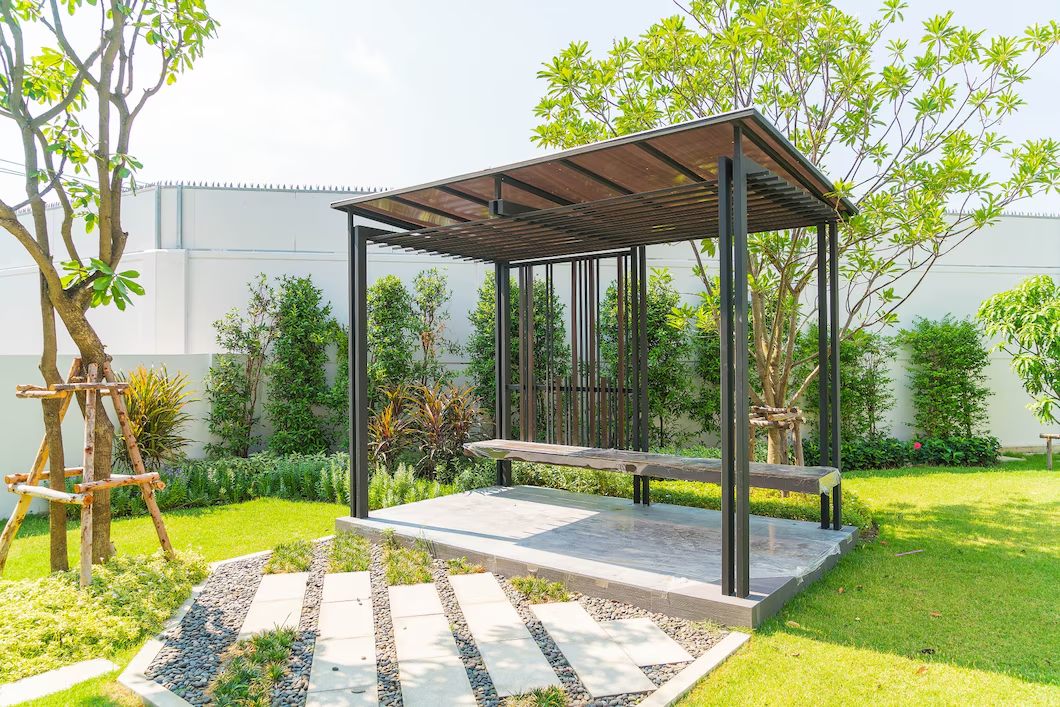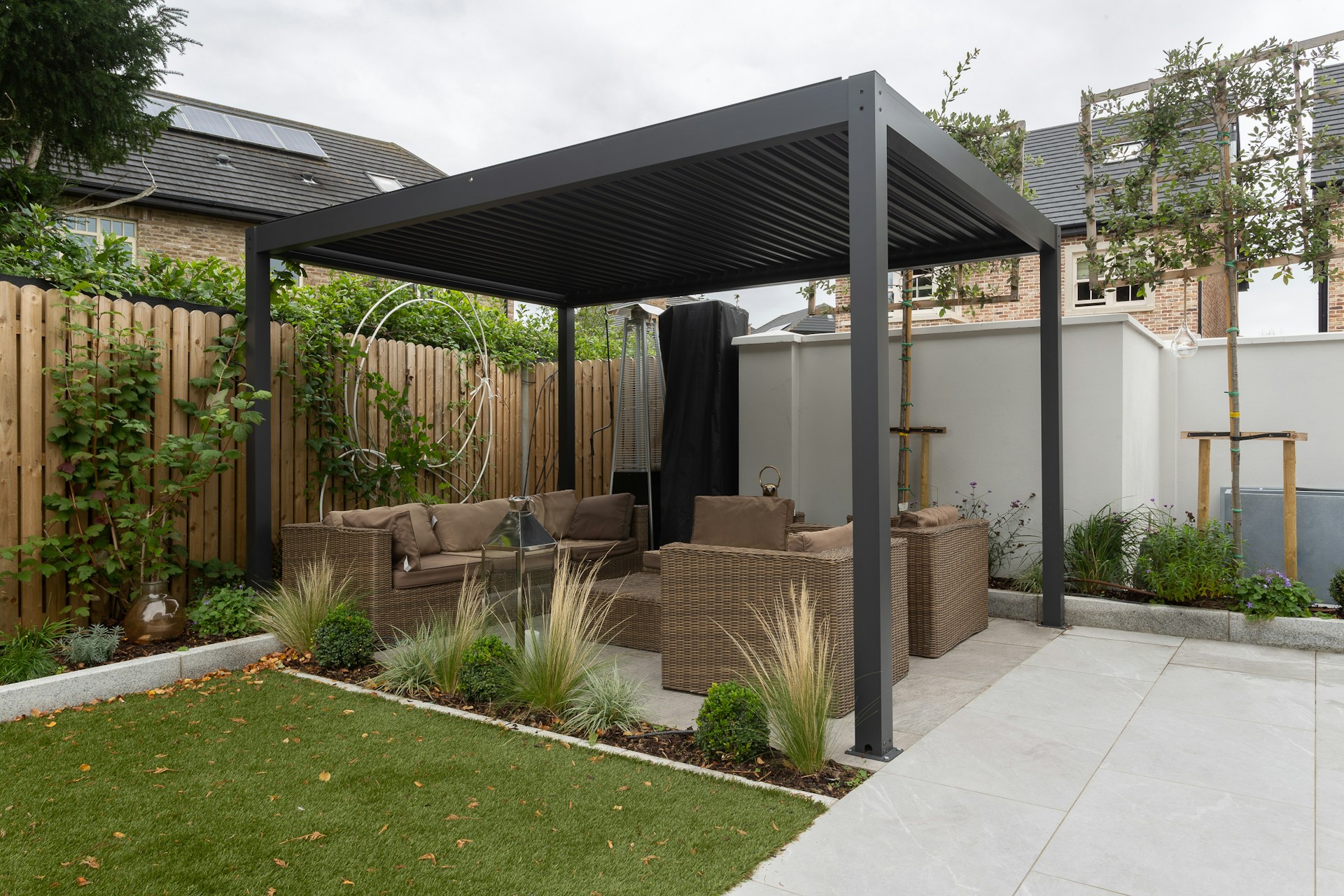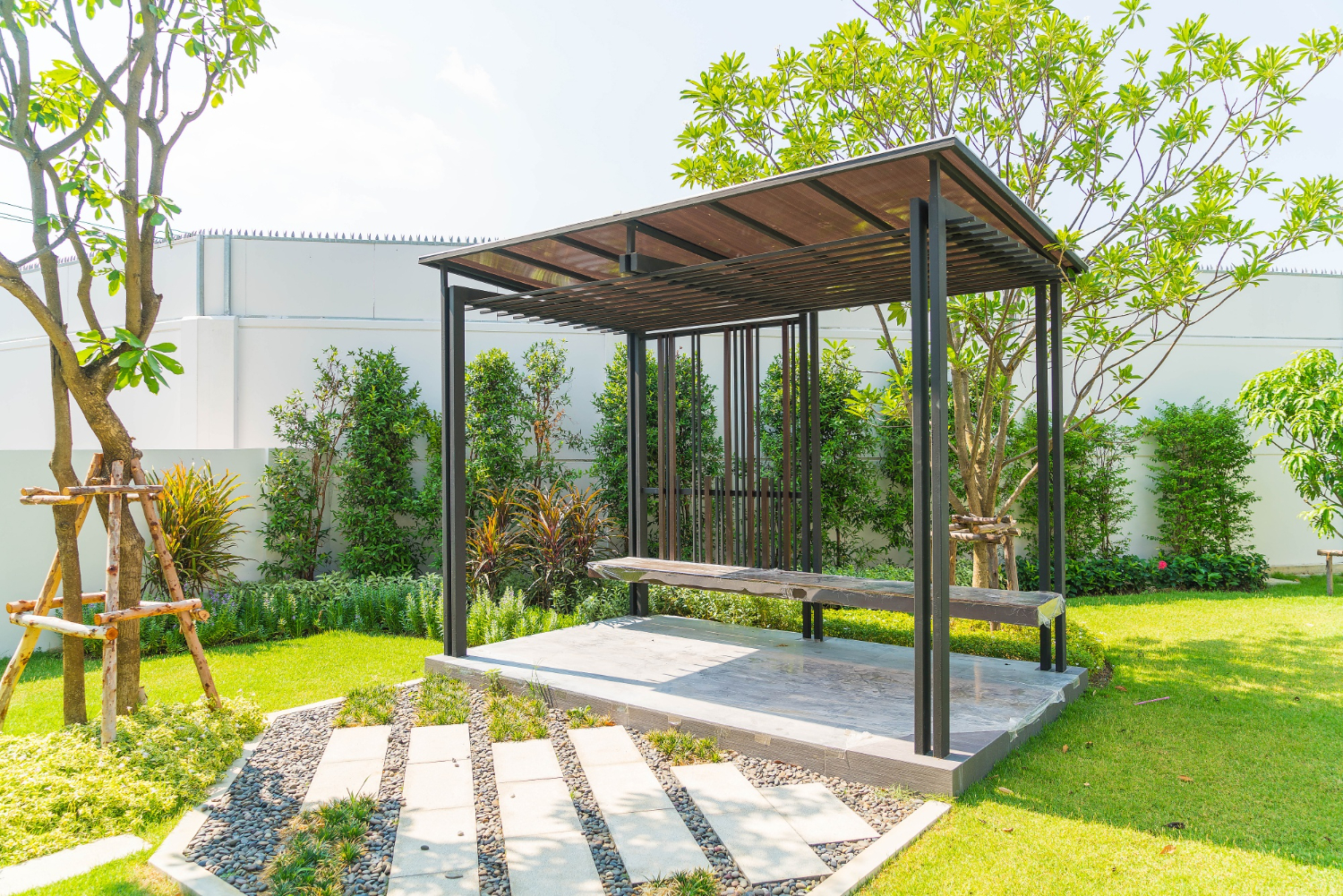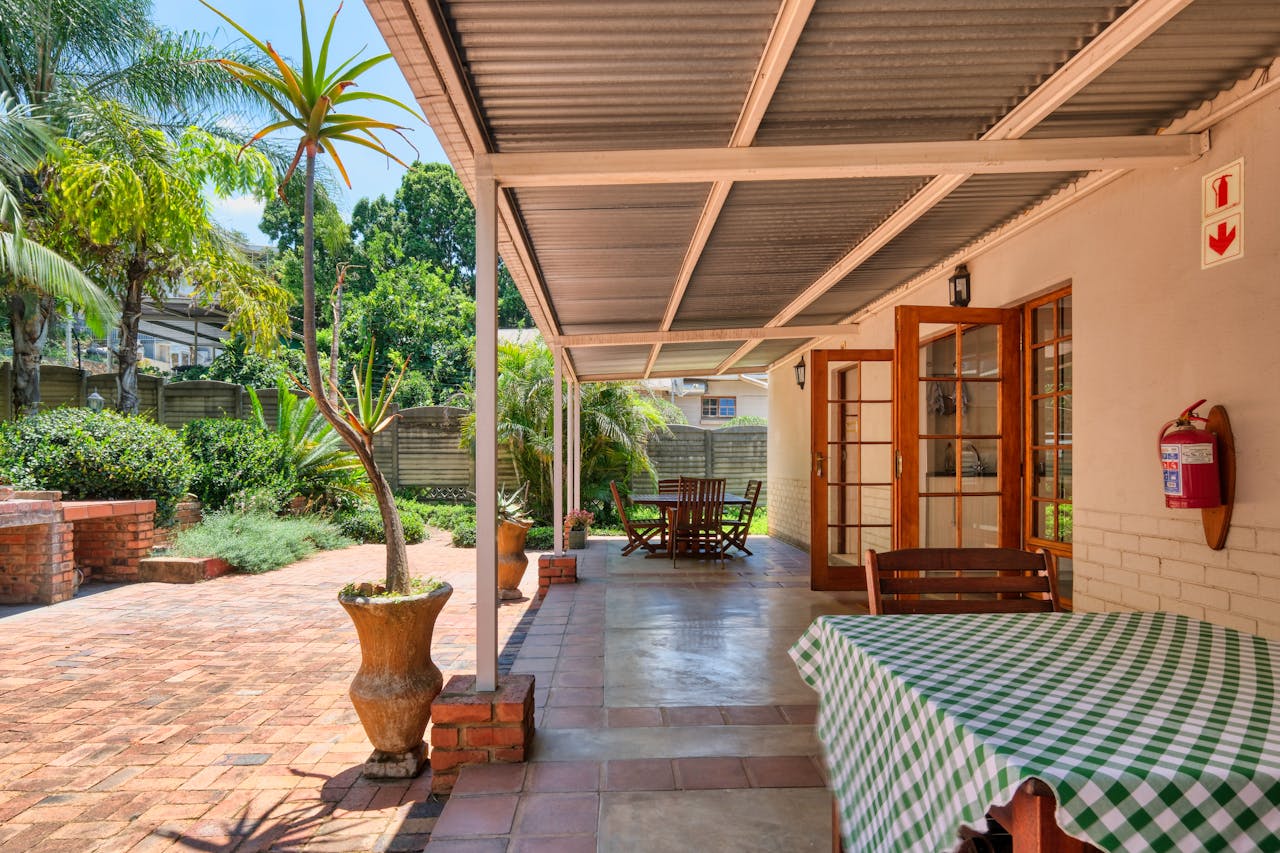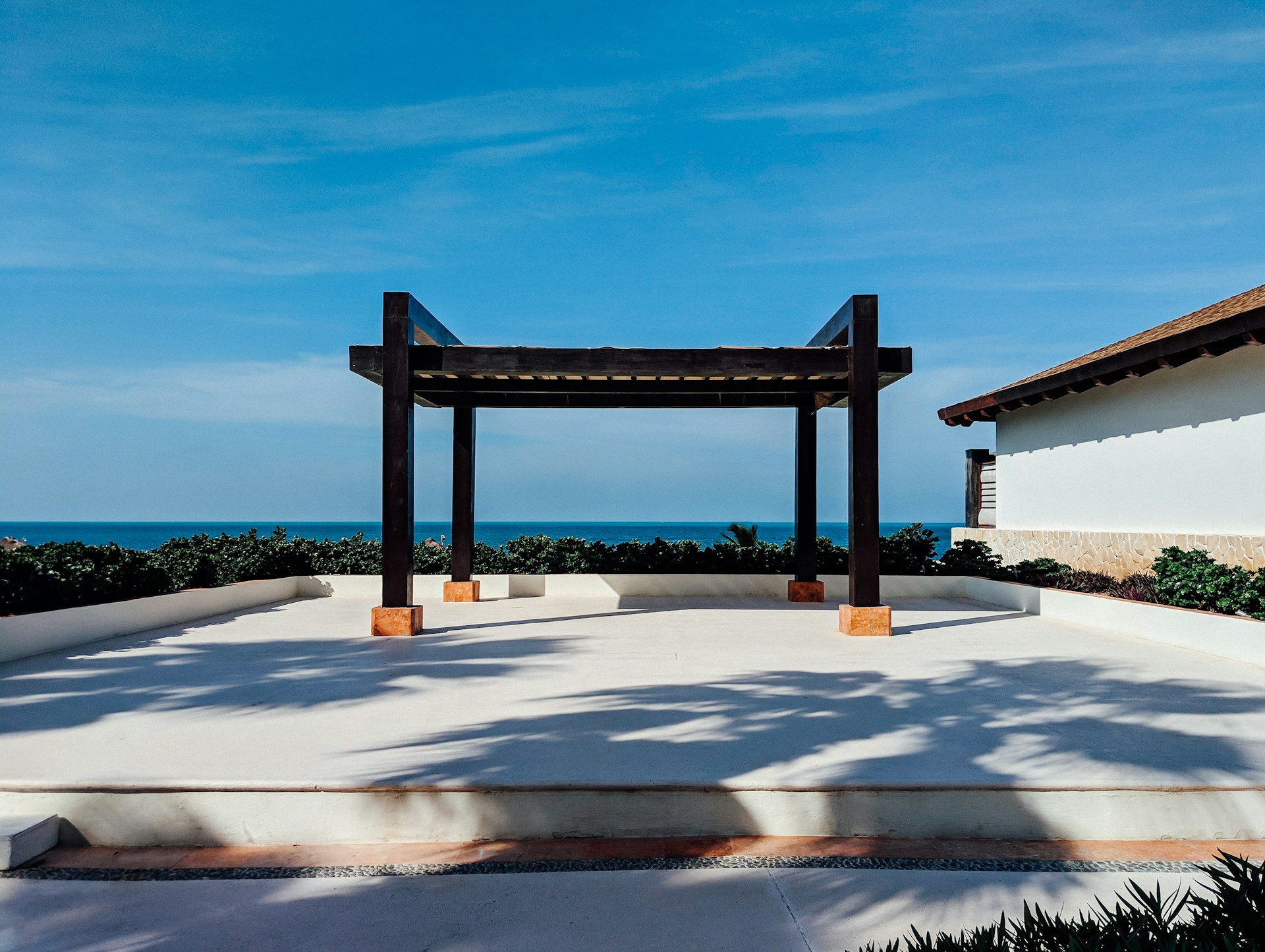Spring in Ohio is a time when many homeowners start enjoying their outdoor spaces again. However, with the budding season’s showers, a common issue arises—water pooling on aluminum pergolas. Pergolas are fantastic for providing shade and enhancing the aesthetic of your backyard, but if they hold water, it can lead to unwanted wear and tear. Let’s look into how this can be prevented and resolved.
When rain strikes, it often reveals any vulnerabilities in your pergola’s design or installation. From improper sloping to blocked drainage, water can easily collect in unwanted areas. Understanding why this happens and what you can do about it is crucial for maintaining your pergola’s beauty and functionality.
Causes of Water Pooling
Rainwater pooling on your pergola can be traced back to a few main reasons:
1. Improper Sloping: If your pergola doesn’t have the correct angle to guide water away, it can cause water to stand on the surface. This is often due to design flaws or settling grounds where the pergola is installed.
2. Clogged Drainage Systems: Gutters and drainage systems can get clogged with leaves, dirt, and debris. This blockage stops water from flowing away effectively, causing it to accumulate on your pergola.
3. Seasonal Changes: Ohio’s shifting weather patterns, especially in spring, can lead to unexpected rainfall and temperature fluctuations. These changes might affect the material of your pergola or how it directs water.
Each of these issues can impact the overall condition and longevity of your pergola. Addressing them can ensure your outdoor space stays dry and enjoyable throughout the year.
Preventing Water Pooling
Preventing this issue starts with some proactive measures:
– Regular Cleaning: Regularly remove leaves and debris from the pergola’s surface and gutters. Doing so will enhance the efficiency of drainage systems.
– Check for Proper Sloping: Ensure your pergola is installed with the correct angle or adjust it if necessary. It’s important to have a slight slope directing water away rather than allowing it to stagnate.
– Install Drainage Systems: Consider setting up a drainage system if your pergola often collects water. Gutters and downspouts can be highly effective in redirecting water.
Being vigilant about these practices can spare you the hassle of a soggy pergola and contribute to its overall longevity and aesthetic appeal. Regular checks and maintenance are key to keeping your outdoor space both beautiful and functional.
We’re halfway there in ensuring your aluminum pergola remains a treasured part of your backyard throughout the wet and vibrant spring months. In the next part, we’ll explore how to fix existing water issues and ensure your pergola is always ready for the season.
Fixing Existing Water Pooling Issues
If you’ve already got water pooling on your aluminum pergola, taking action quickly can prevent further damage. The first step is to identify the root of the problem. Look for signs like water stains or splashes on the ground next to your pergola. These can indicate where water is accumulating. Another common problem area is where two sections of the pergola meet, as these spots might not have been sealed properly.
Once you’ve pinpointed the issue, the next step is fixing it. For minor pooling caused by debris, a simple cleaning can often do the trick. Clear out gutters and make sure there are no obstructions blocking the water’s path. If the pooling is due to improper sloping or other structural issues, it might be best to call in a professional. Properly adjusting the slope or repairing the drainage system yourself can be tricky and time-consuming without the right tools and expertise.
When dealing with larger structural issues, professionals can ensure that the job is done correctly and safely. They’ll have the know-how to handle complex repairs, ensuring that your pergola not only looks good but also functions as it should.
Long-Term Maintenance
Keeping your pergola in top shape requires ongoing care. A consistent maintenance schedule is important for addressing potential problems before they become significant. Regular inspections can help catch small issues early when they are easier and more affordable to fix. Spring is a great time to check the integrity of your pergola’s slope and address any corrections needed.
Here’s a basic maintenance checklist you might find helpful:
– Check Sloping: Ensure the pergola slopes adequately for water runoff; adjust if needed.
– Inspect and Clean Gutters: Keep them clear of leaves and debris to ensure effective drainage.
– Seal Joints: Look at joints and connections for any gaps that might allow water to pool or leak.
– Examine for Wear and Tear: Assess the pergola’s structure for any signs of damage or weakening over time.
Routine maintenance can keep your pergola free of water problems and maintain its look and feel. It’s always easier to prevent issues than repair them later.
Create a Refreshing Outdoor Space
Having a pergola that doesn’t gather water ensures you get the most out of your outdoor space. A well-maintained pergola enhances both the functionality and enjoyment of your backyard. With a few simple preventive steps and some attention to fixes when problems arise, you can keep it looking great and functioning properly.
Picture enjoying a sunny spring afternoon or evening under your pergola with friends and family, with no worries about unexpected spots of water or mess. By keeping up with simple maintenance routines and knowing when to get professional help, your outdoor area can remain comfortable and inviting.
To enjoy your pergola without the worry of water issues, consider enhancing your setup with a quality enclosure on the patio. These structures can greatly improve your outdoor living experience by providing coverage and protection against the elements. Visit Giant Factory Direct to explore more about how we can transform your outdoor space with reliable solutions.


